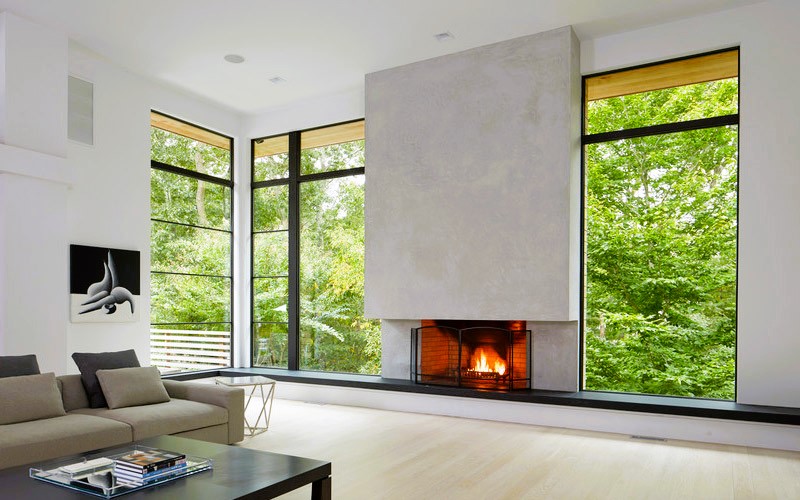
How to Choose Energy-Efficient Windows for Your Climate
Windows play a critical role in the energy efficiency and comfort of your home. They can help retain heat during the cold winter months, keep your home cool in the scorching summer, and provide natural light year-round. However, choosing the right windows for your climate is essential to optimize energy efficiency and make your living space more comfortable. In this article, we will explore the factors to consider when selecting energy-efficient windows tailored to your specific climate.
The Importance of Climate Considerations
Climate has a significant impact on the performance of your windows. Different climates have varying demands on windows in terms of insulation, solar heat gain, and resistance to weather conditions. By choosing windows that align with your climate, you can enhance your home’s energy efficiency and save on heating and cooling costs.
Understanding the Four Climate Zones in North America

North America encompasses a wide range of climates, from the frigid winters of Canada to the scorching summers of the southern United States. To simplify climate considerations, the American Architectural Manufacturers Association (AAMA) and the National Fenestration Rating Council (NFRC) have divided North America into four climate zones:
1. Northern Zone: This zone includes areas with cold winters and mild summers, such as Canada and the northern United States. Windows in this zone should focus on preventing heat loss during the winter.
2. North/Central Zone: This region experiences cold winters and warm summers. Windows need to balance heat retention and solar heat gain.
3. South/Central Zone: Here, there are hot summers and mild winters. Energy-efficient windows should prioritize blocking solar heat gain while allowing natural light.
4. Southern Zone: This zone has hot summers and mild winters, making it important for windows to reduce heat gain and enhance cooling efficiency. Consider our clean energy options for homeowners in Canada.
Key Factors to Consider
When choosing energy-efficient windows for your climate, consider the following factors:
1. Window U-Factor: The U-factor measures how well a window insulates. Lower U-factor values are better for colder climates, while warmer climates may benefit from a slightly higher value to balance insulation and solar heat gain.
2. Solar Heat Gain Coefficient (SHGC): The SHGC indicates how much solar heat the window allows to enter your home. Lower SHGC values are ideal for warmer climates to reduce cooling loads, while higher values can help with winter heating.
3. Visible Transmittance (VT): VT measures the amount of natural light that passes through the window. Higher VT values are desirable for all climates to maximize daylight.
4. Frame Material: The material of the window frame can affect its insulation properties. Wood, vinyl, and fiberglass frames are known for their energy efficiency.
5. Glazing Options: Multiple glazing options, including double and triple glazing, can provide better insulation and energy efficiency. For colder climates, triple glazing may be a wise choice.

6. Gas Fills: Some energy-efficient windows have argon or krypton gas fills between the glass panes, enhancing insulation properties.
7. Low-E Coatings: Low-emissivity coatings can help regulate the amount of heat and light that enters your home.
Government Standards and Incentives
To encourage the use of energy-efficient windows, governments often establish standards and offer incentives. Energy Star, for instance, is a widely recognized program in the United States and Canada that sets performance standards for energy-efficient windows. By choosing Energy Star-certified windows, you can ensure that they meet specific energy efficiency criteria.
For detailed information on government programs and incentives in Canada and the United States, you can visit the Energy Star website.
Window Orientation and Shading
The orientation of your windows in relation to the sun’s path can also impact energy efficiency. South-facing windows typically receive more direct sunlight, making them more prone to heat gain. In such cases, shading strategies like awnings or blinds can help control solar heat gain.
North-facing windows receive the least direct sunlight and are less likely to overheat your home. East-facing windows get morning sun, while west-facing windows receive afternoon sun. Consider these factors when deciding on the type and placement of windows.
Conclusion
Choosing energy-efficient windows tailored to your climate is a smart investment that can enhance the comfort and energy efficiency of your home. By considering factors like U-factor, SHGC, frame material, glazing options, and government standards, you can make informed decisions that benefit both your living space and the environment. Whether you live in a cold, hot, or mixed climate zone, selecting the right windows will help you achieve a more sustainable and comfortable home.
